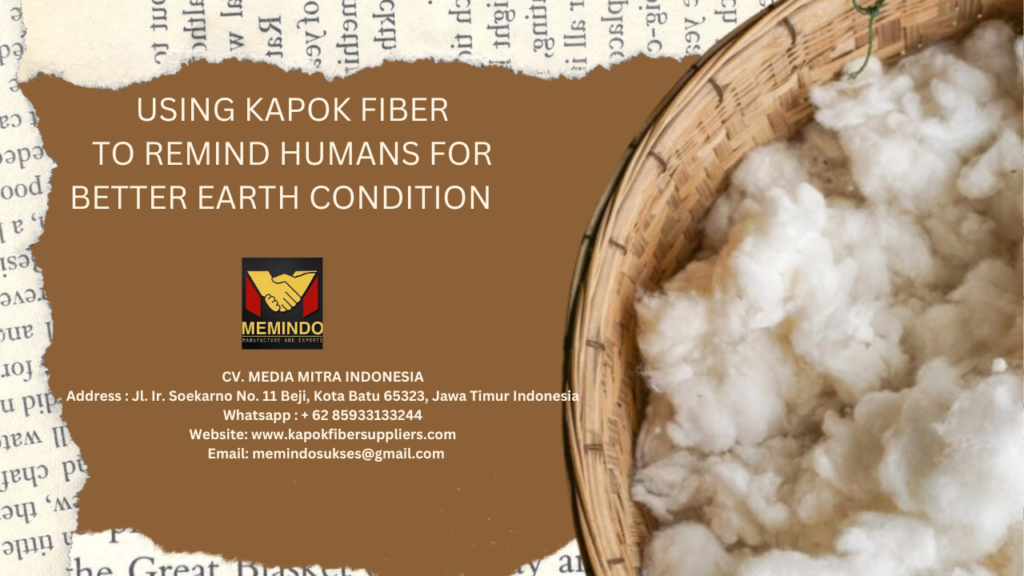Kapok fiber is a fascinating natural material with a variety of uses, especially in sustainable and eco-friendly products. Here’s a closer look at why kapok fiber is often associated with “back to nature” movements:
What is Kapok Fiber?
Kapok is a natural fiber obtained from the seed pods of the kapok tree (*Ceiba pentandra*), which is native to tropical rainforests in regions like Southeast Asia and Central and South America. The fiber is soft, lightweight, and fluffy, making it a popular choice for various applications.
Properties of Kapok Fiber
1. Lightweight: Kapok is one of the lightest natural fibers, which makes it ideal for use in cushioning and padding.
2. Water-Resistant: It has some natural resistance to water, which can make it suitable for outdoor and moisture-prone environments.
3. Insulating: Kapok provides excellent thermal insulation, keeping warmth in and cold out.
4. Hypoallergenic: It is less likely to cause allergic reactions compared to some other fibers, making it a good option for people with sensitive skin.
5. Biodegradable: Being a natural product, kapok fiber is biodegradable and can be composted, making it a more environmentally friendly option compared to synthetic materials.
Uses of Kapok Fiber
1. Stuffing for Pillows and Cushions: Its softness and resilience make it a great choice for filling pillows, cushions, and even stuffed toys.
2. Mattresses: Kapok is used in some high-quality, eco-friendly mattresses due to its cushioning properties.
3. Insulation: It can be used in eco-friendly insulation materials, providing thermal protection while being a natural and sustainable option.
4. Crafts and Upholstery: Kapok can be used in various crafts and upholstery projects, adding a natural touch to handmade items.
Environmental Impact
Kapok trees are typically grown in tropical rainforests, where they play a role in maintaining ecological balance. Harvesting kapok fiber is generally sustainable because it doesn’t require cutting down the tree; the fiber is collected from the pods after they fall to the ground. This makes kapok a renewable resource with a lower environmental impact compared to synthetic alternatives.
Why “Back to Nature”?
Using kapok fiber aligns with the “back to nature” ethos because it emphasizes the use of natural, renewable resources and minimizes reliance on synthetic materials. Incorporating kapok into products can support sustainable practices and reduce the environmental footprint of consumer goods.
Overall, kapok fiber represents a harmonious blend of natural functionality and environmental responsibility, fitting well with the principles of sustainability and eco-conscious living.
CV. MEDIA MITRA INDONESIA
Address : Jl. Ir. Soekarno No. 11 Beji, Kota Batu 65323, Jawa Timur Indonesia
Whatsapp : + 62 85933133244
Website: www.kapokfibersuppliers.com
Email: memindosukses@gmail.com
Source by : Zulfan Arya Nurdiansyah

